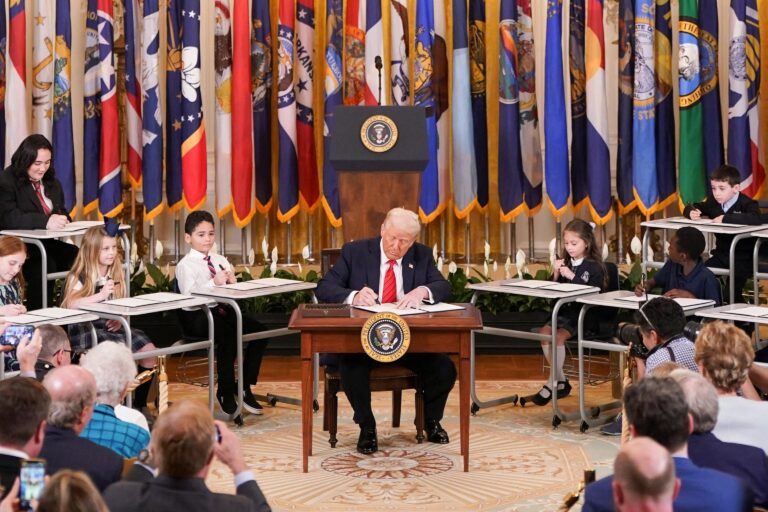Examining the Feasibility of Dismantling the U.S. Department of Education: Legal and Political Perspectives
Recent statements from former President Donald Trump have sparked renewed discussion about the possibility of drastically downsizing or even abolishing the U.S. Department of Education. This proposal has ignited a complex debate regarding the constitutional authority and legislative procedures required to alter or eliminate a federal agency of this magnitude. This article delves into the legal framework governing the Department of Education, reviews historical precedents of executive restructuring, assesses the potential consequences for federal education programs, and offers strategic recommendations for navigating the intertwined legal and political challenges.
Constitutional and Legislative Constraints on Abolishing the Department of Education
The Department of Education was created through congressional legislation, embedding its existence and functions firmly within federal law. Consequently, any attempt by the executive branch to dissolve the department without congressional consent confronts formidable legal barriers. The U.S. ConstitutionŌĆÖs separation of powers doctrine ensures that the president cannot unilaterally terminate agencies established by statute. The departmentŌĆÖs core responsibilitiesŌĆöincluding managing federal student aid, enforcing civil rights in education, and overseeing nationwide education standardsŌĆöare codified in laws that only Congress can amend or repeal.
Legal precedents reinforce that executive orders cannot supersede or nullify statutes enacted by Congress. While the president may propose budget reductions or organizational reforms, ultimate authority over agency existence and funding rests with the legislative branch. Key legal impediments include:
- Statutory Mandate: The departmentŌĆÖs creation and operational scope are defined by federal statutes requiring congressional action for modification or abolition.
- Separation of Powers: Congress holds exclusive power to establish or dismantle federal agencies, serving as a check on executive overreach.
- Judicial Enforcement: Courts have the authority to invalidate executive actions that exceed presidential powers or conflict with legislative intent.
| Legal Barrier | Description | Effect on Executive Action |
|---|---|---|
| Statutory Foundation | Department established by federal law | Requires congressional repeal to dissolve |
| Congressional Authority | Control over agency creation and budget | Limits presidentŌĆÖs unilateral power |
| Judicial Oversight | Courts enforce separation of powers | Can block unlawful executive orders |
Historical Context: Executive Restructuring and Congressional Collaboration
Throughout U.S. history, presidents have occasionally sought to reorganize or eliminate federal agencies, but such efforts have consistently required legislative backing. The Administrative Procedure Act and the Congressional Review Act provide procedural frameworks for agency changes but do not grant presidents the authority to unilaterally abolish major departments. For example, the creation of the Department of Homeland Security in 2002 was the result of extensive bipartisan legislation, not executive fiat. Similarly, the 1989 reorganization of the Department of Veterans Affairs involved significant congressional negotiation and funding approval.
These precedents illustrate that while presidents can initiate proposals to streamline government functions, the complete dissolution of a cabinet-level agency like the Department of Education without congressional consent is historically unprecedented and legally dubious.
- Department of Veterans Affairs (1989): Reorganization required congressional funding approval and oversight.
- Department of Homeland Security (2002): Established through bipartisan legislation after comprehensive debate.
- NASA Restructuring (1960s-70s): Presidential initiatives necessitated congressional budget amendments and authorization.
| Agency | Year | Executive Action | Congressional Involvement |
|---|---|---|---|
| Department of Veterans Affairs | 1989 | Reorganization plan proposed | Funding approval and oversight |
| Department of Homeland Security | 2002 | Creation and consolidation | Bipartisan legislation enacted |
| Environmental Protection Agency | 1970 | Establishment by executive and legislative action | Supported by courts and Congress |
Consequences for Federal Education Programs and Reactions from Key Stakeholders
Should unilateral efforts to dismantle the Department of Education advance, the impact on federal education initiatives would be swift and severe. Programs such as Title I funding for disadvantaged schools, Individuals with Disabilities Education Act (IDEA) grants, and Pell Grants for college students could face immediate funding interruptions. This would place enormous strain on state education agencies and local school districts, many of which rely heavily on federal support to serve vulnerable populations. The resulting fragmentation of policy oversight could lead to inconsistent educational standards and exacerbate inequities across states.
The education sectorŌĆÖs response has been polarized. TeachersŌĆÖ unions, civil rights organizations, and education advocacy groups have condemned the proposal, emphasizing the risk to decades of progress in educational equity. Conversely, some policy analysts and think tanks advocating for reduced federal involvement argue that such a move could empower local control and innovation in education governance.
| Stakeholder | Position | Likely Actions |
|---|---|---|
| TeachersŌĆÖ Unions | Firmly opposed | Member mobilization, congressional lobbying |
| Education Advocacy Groups | Strongly critical | Public awareness campaigns, legal challenges |
| State Education Agencies | Concerned, cautious | Develop contingency plans |
| Federalism-Focused Think Tanks | Supportive | Policy research, congressional briefings |
Strategic Approaches for Addressing Legal Complexities and Fostering Legislative Cooperation
Given the intricate legal and political landscape, stakeholders aiming to influence the future of the Department of Education should prioritize comprehensive legal review and collaborative policymaking. Early engagement with constitutional law experts and education policy specialists can clarify the boundaries of executive authority and anticipate judicial scrutiny. This informed approach strengthens advocacy efforts and helps frame proposals within constitutional limits.
Moreover, fostering open communication channels between Congress, the Department of Education, and public stakeholders is critical for crafting viable reforms. Effective strategies include:
- Establishing bipartisan committees to evaluate proposed changes and build consensus.
- Conducting public hearings to gather input from educators, parents, and advocacy groups.
- Agreeing on phased implementation timelines to allow smooth transitions and minimize disruption.
| Strategy | Advantages | Participants |
|---|---|---|
| Legal Expert Consultations | Define scope of authority and risks | Executive branch, legal advisors |
| Bipartisan Working Groups | Facilitate agreement and shared goals | Congress, education officials |
| Public Engagement Forums | Enhance transparency and trust | Community members, advocacy organizations |
Final Thoughts: Upholding Checks and Balances in Federal Education Policy
While the notion of significantly restructuring or abolishing the Department of Education has gained attention, constitutional safeguards and legislative prerogatives firmly restrict unilateral executive action. The necessity of congressional approval underscores the enduring system of checks and balances that governs federal governance. As this debate evolves, education stakeholders, policymakers, and the public will be closely monitoring how legal interpretations and political negotiations shape the future of federal education administration.







